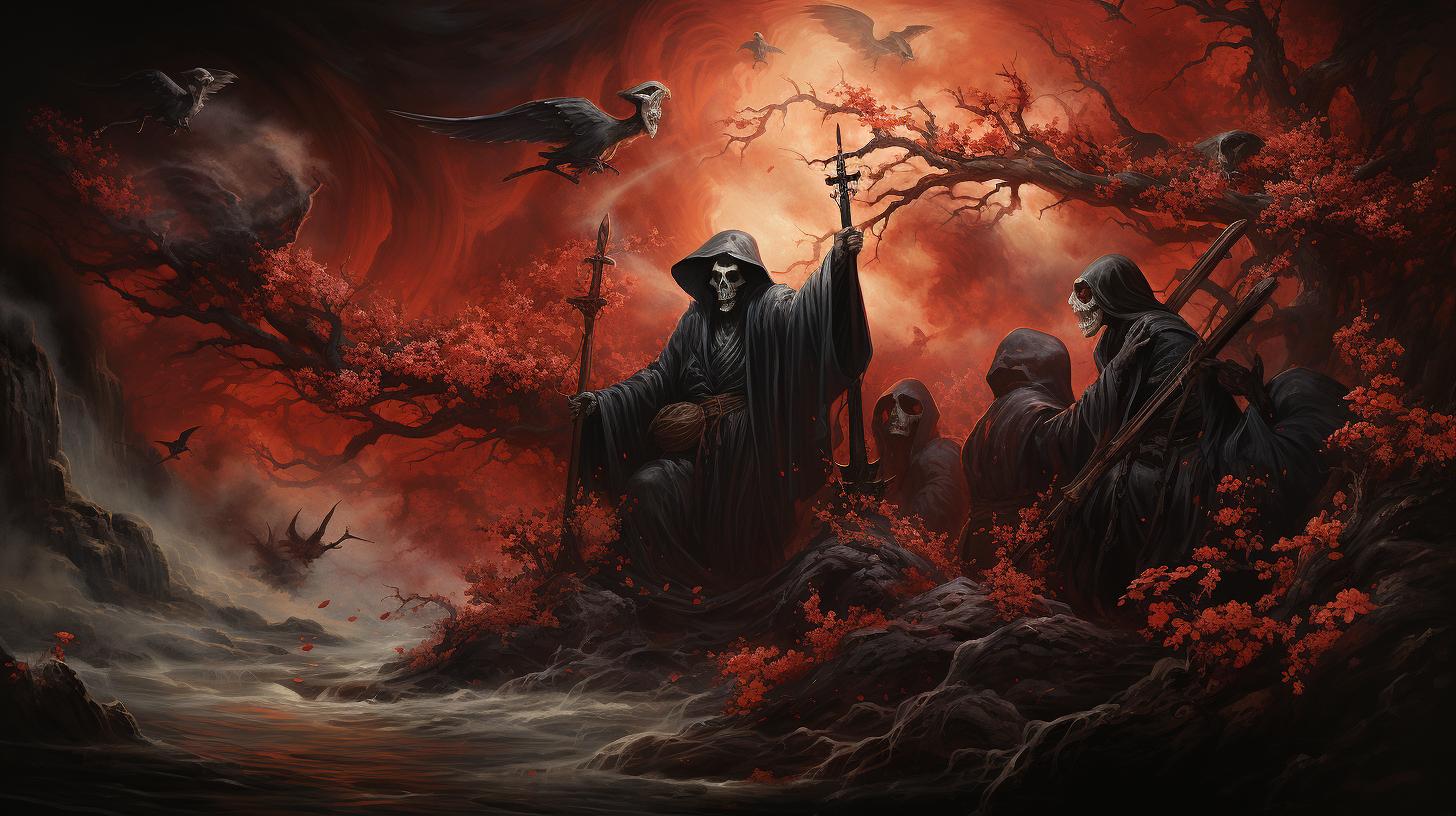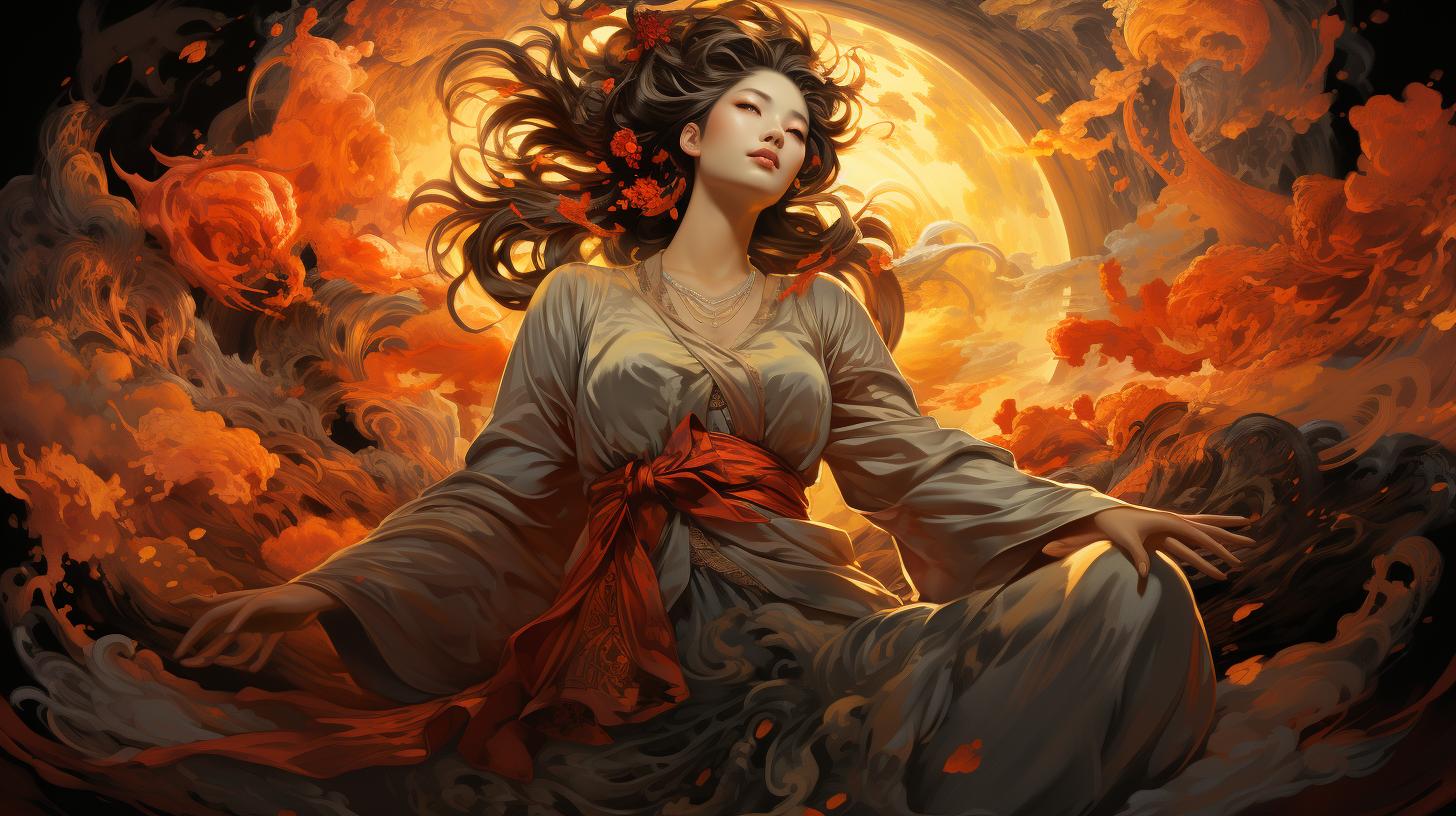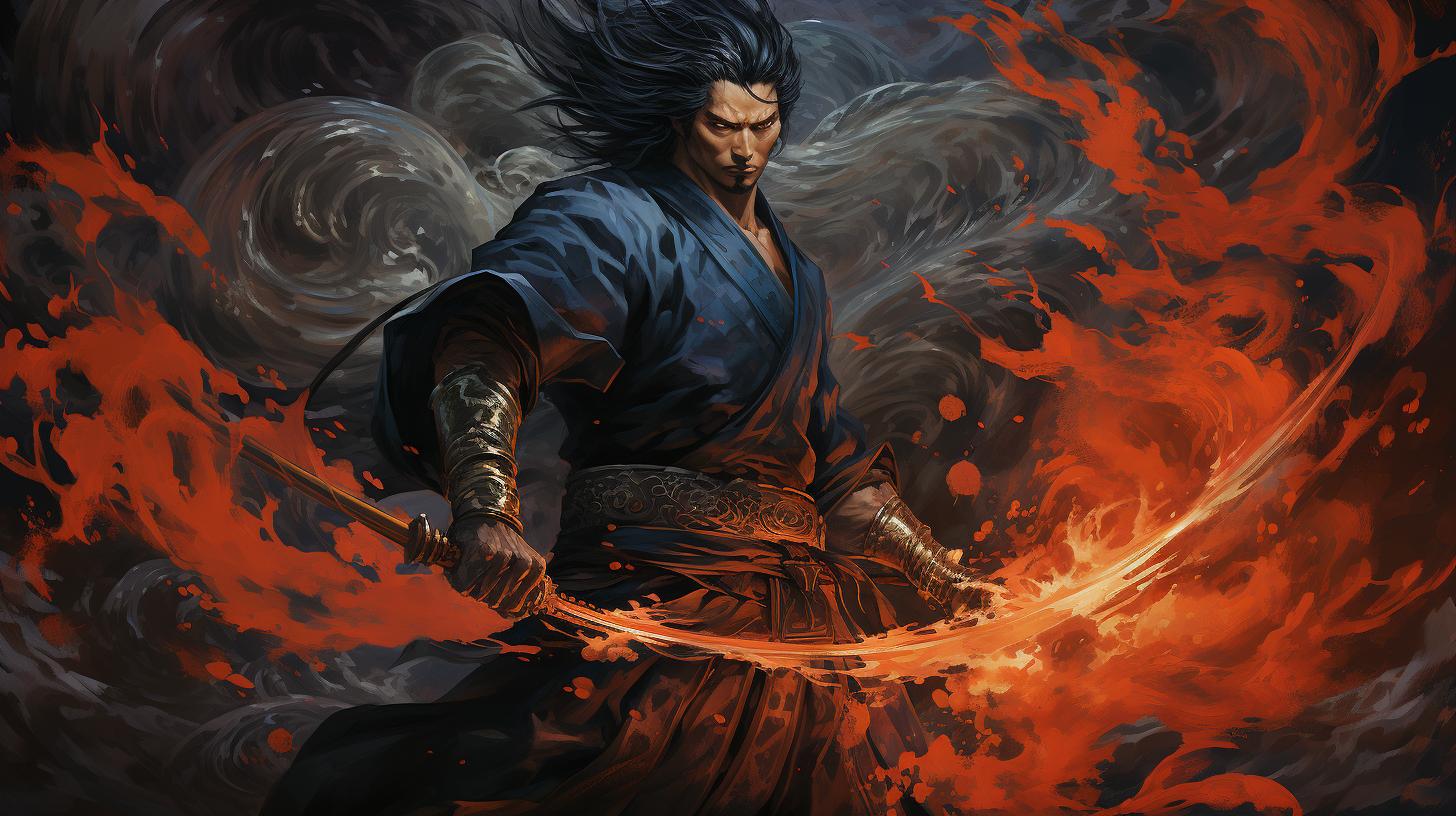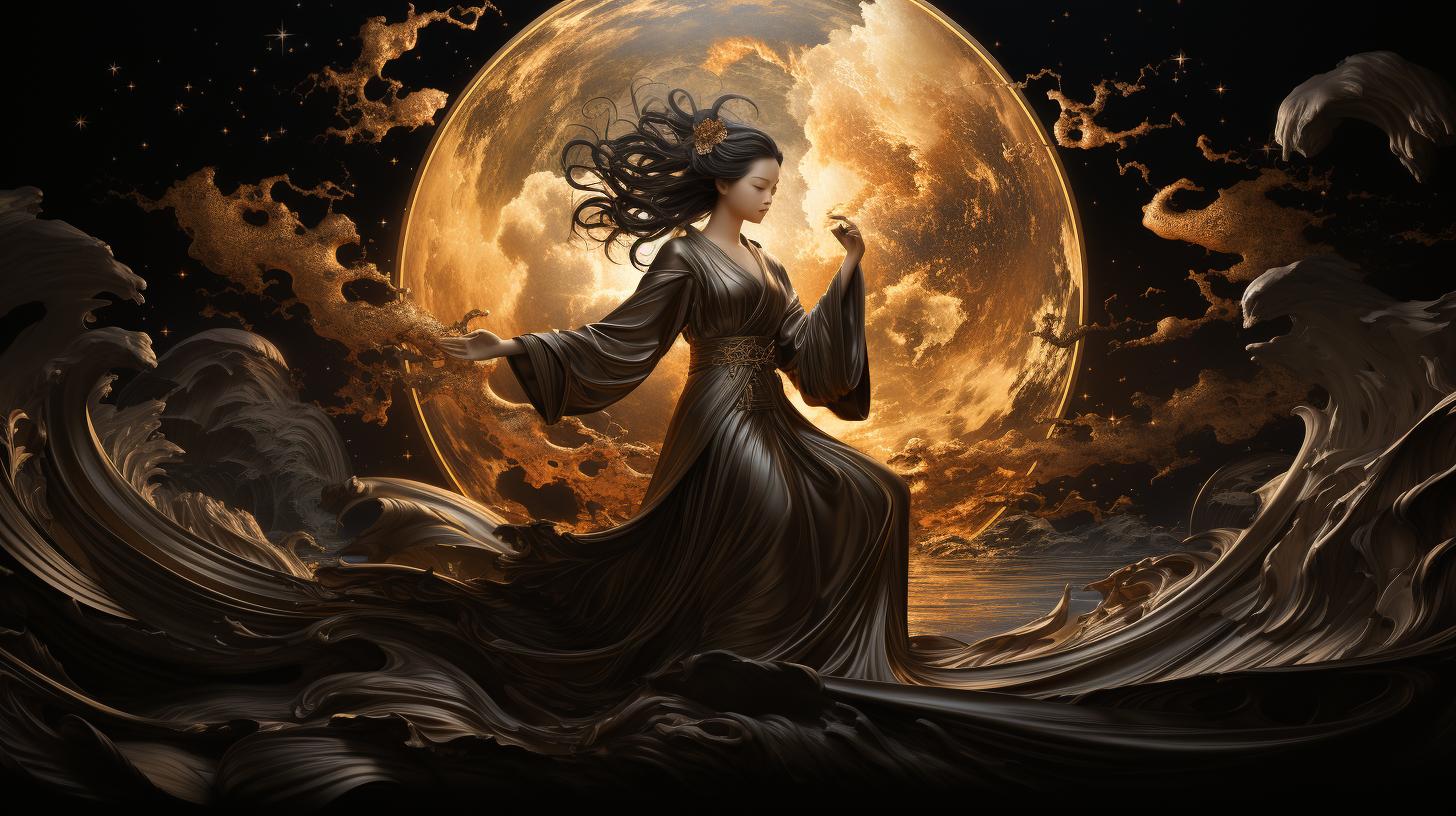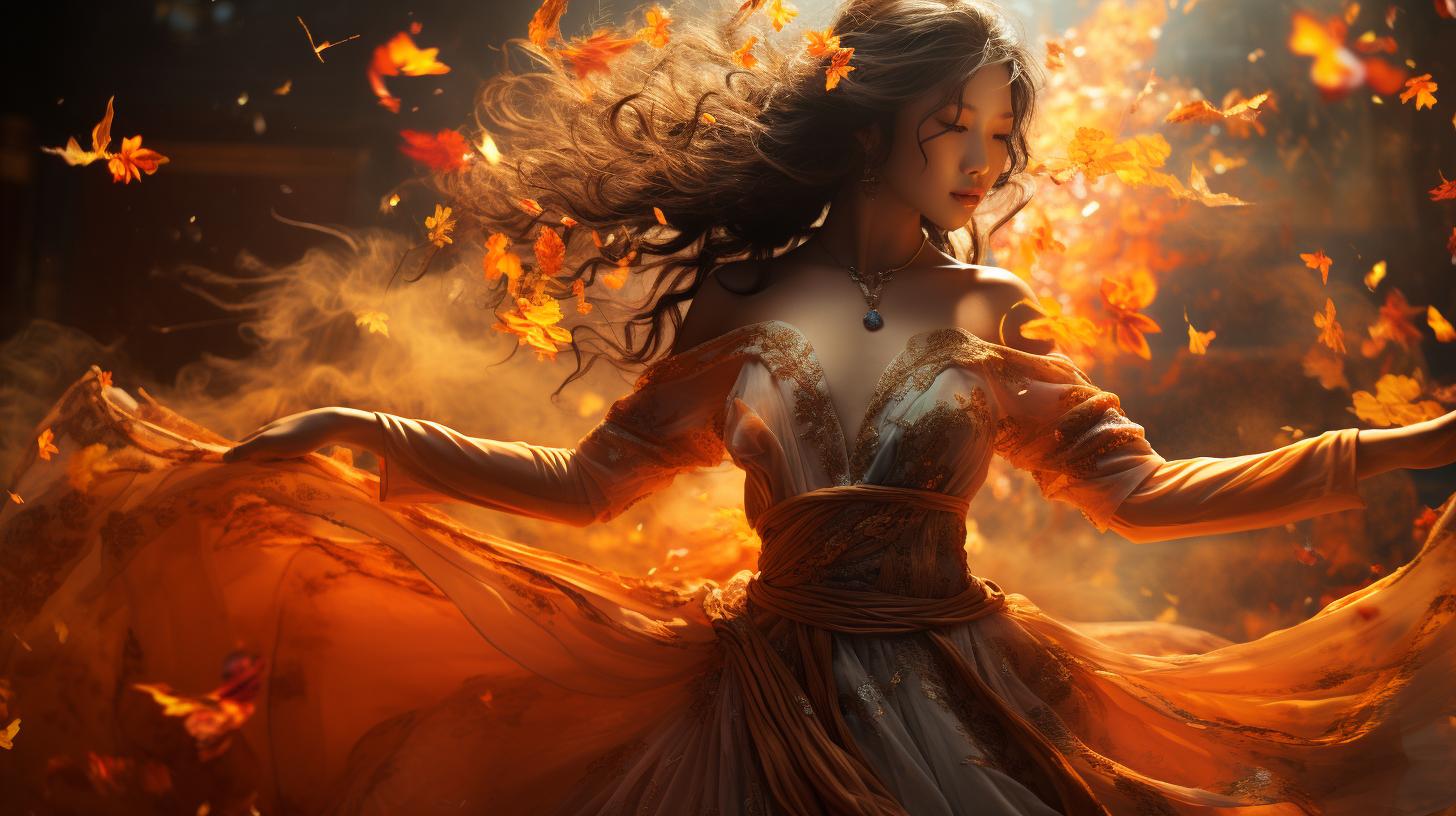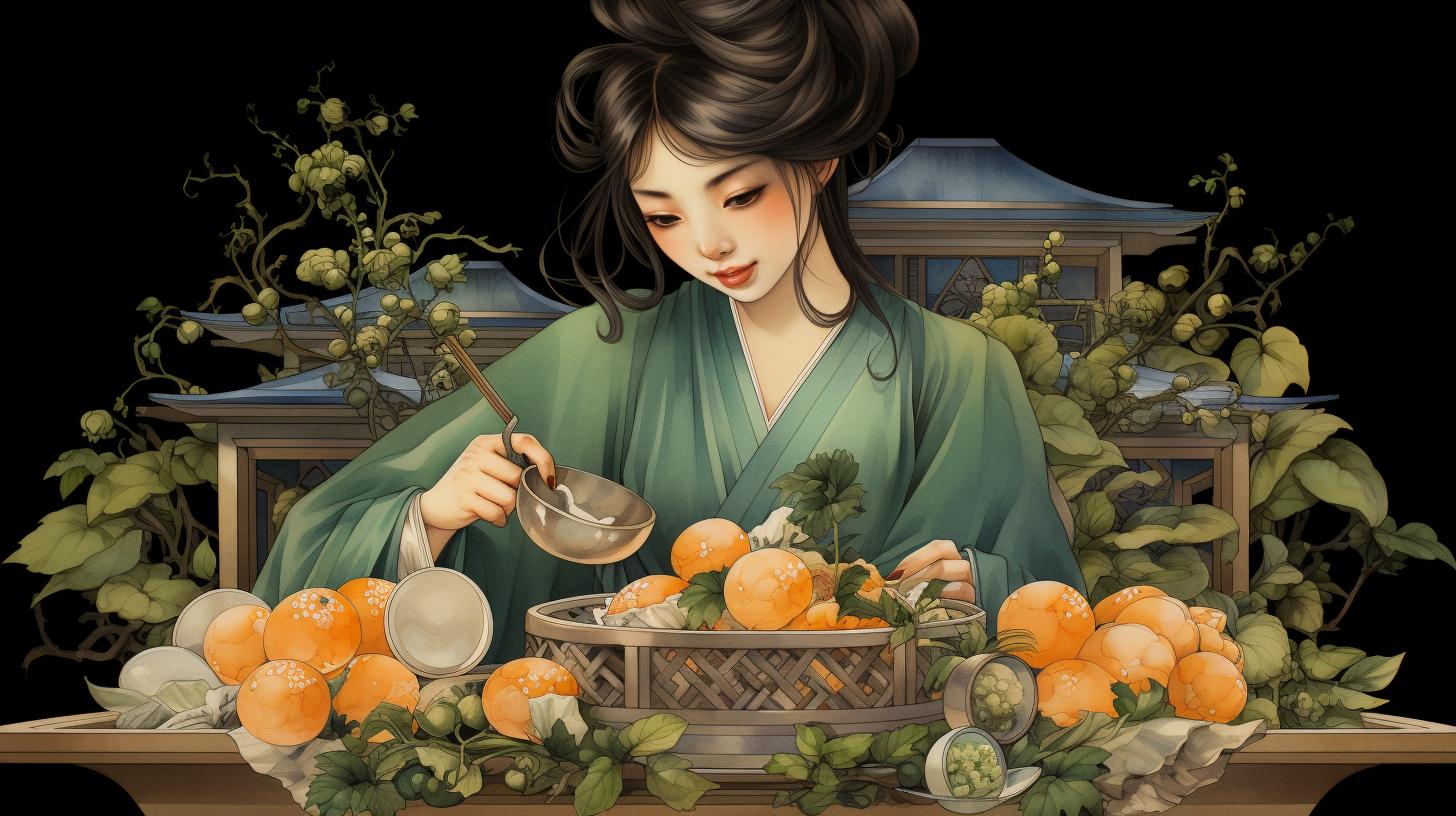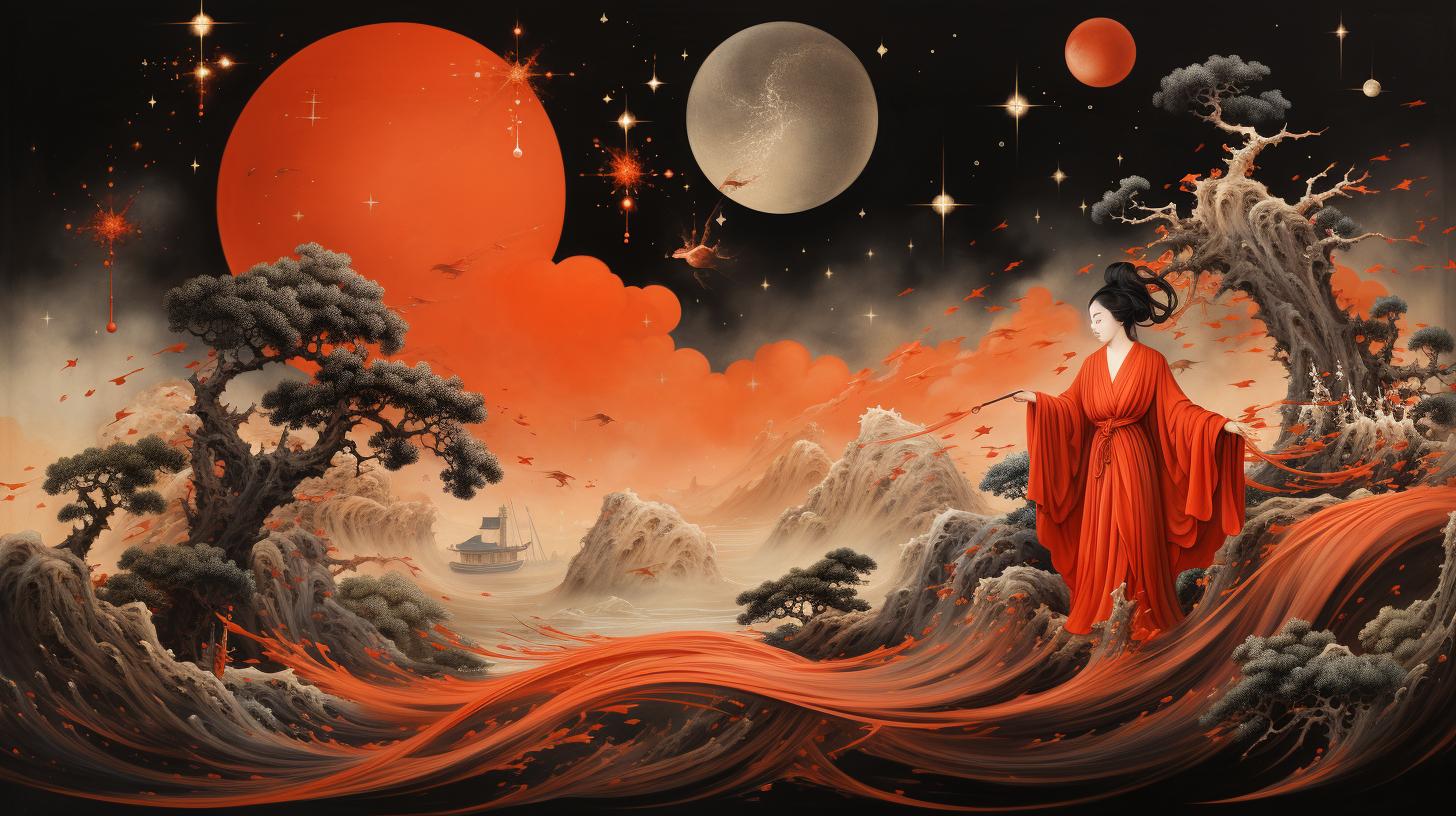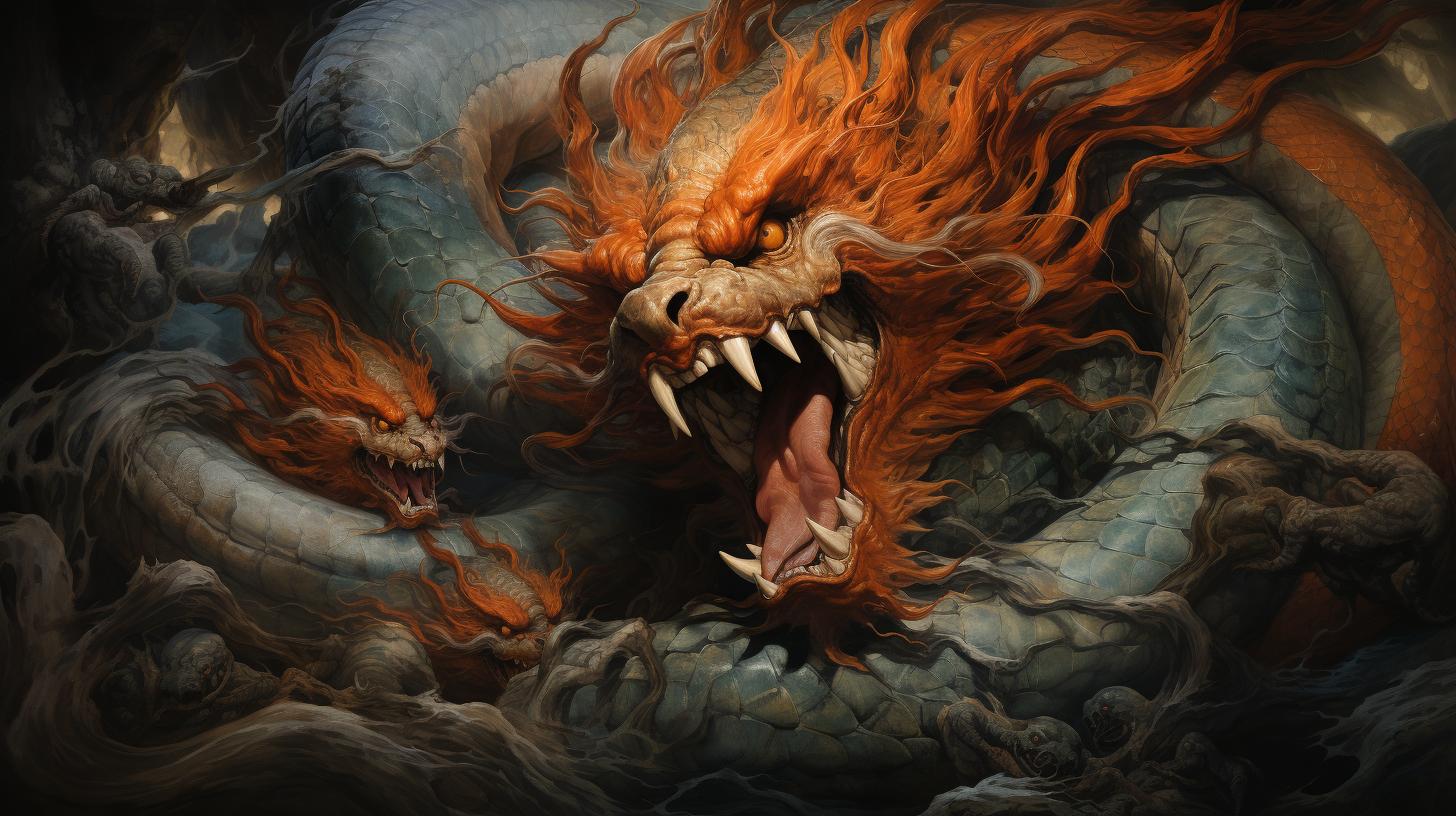Shinigami Japanese Mythology: Unveiling the Secrets of Death Gods
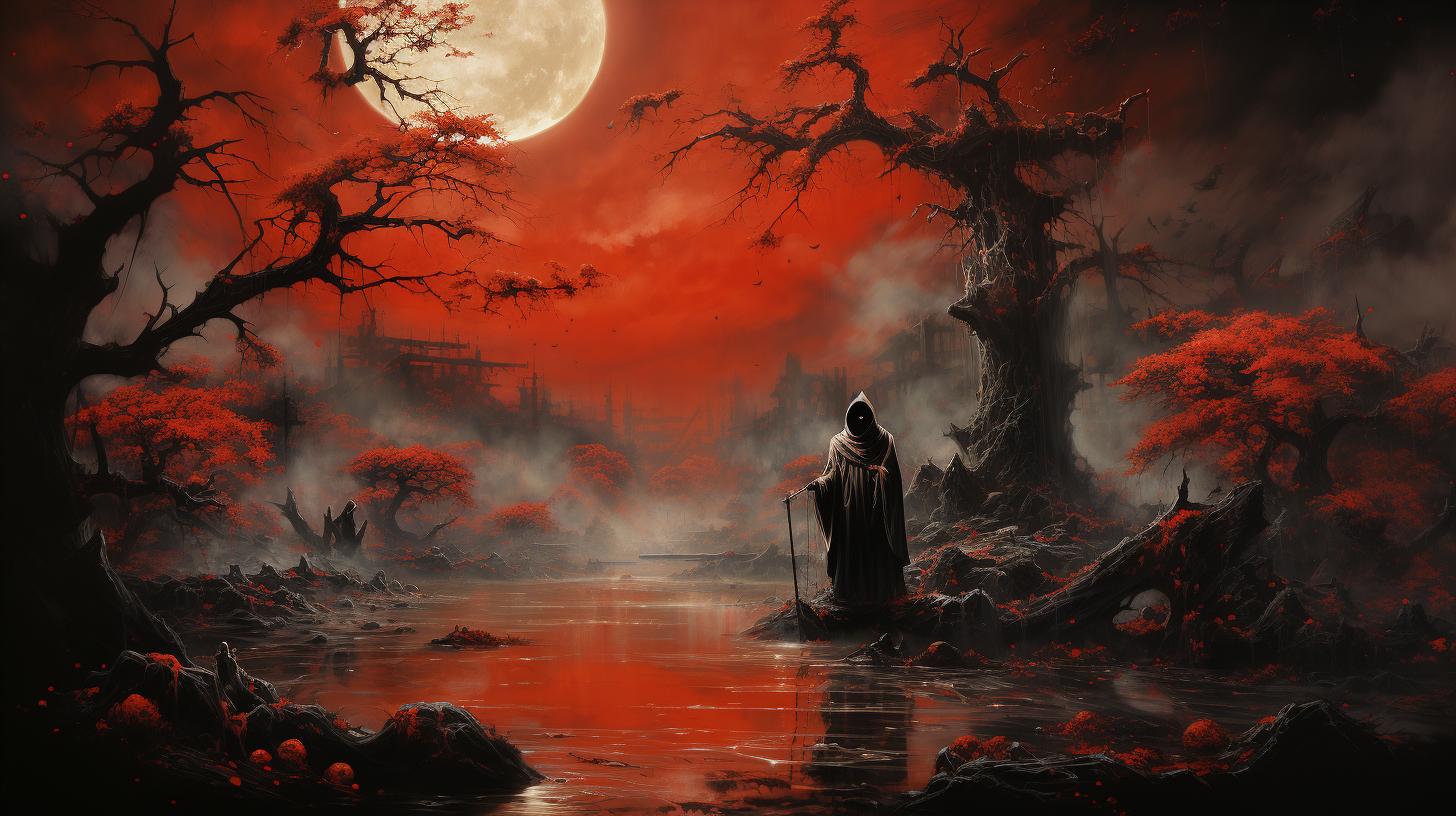
Shinigami, originating from Japanese mythology, are death gods or spirits whose role is to ensure the natural cycle of life and death. They escort souls to the afterlife and are often depicted as mysterious beings, working in pairs.
In modern Japanese media, such as anime and manga, Shinigami continue to play a significant role, presenting various interpretations of their traditional characteristics. This article delves into the origins, functions, and variations of Shinigami, exploring their cultural significance within Japanese mythology and their prevalent presence in pop culture.
Shinigami in Pop Culture
The presence of Shinigami in popular culture has made them iconic figures in contemporary media, particularly in Japan. They have captured the imagination of audiences worldwide, making appearances in various forms of entertainment such as anime, manga, literature, and folklore.
Shinigami in Anime and Manga
Shinigami have gained significant prominence in the realm of anime and manga, captivating fans with their intriguing roles and fascinating characteristics. Numerous series have explored the concept of Shinigami, showcasing their unique abilities, appearances, and relationships with humans.
In these narratives, Shinigami often interact with mortals, either as guides or as catalysts for supernatural events.
Several well-known anime and manga titles have prominently featured Shinigami, captivating audiences with their complex narratives.
Works like “Death Note,” “Bleach,” and “Soul Eater” have introduced Shinigami as central characters, exploring their interactions with humans and their pivotal role in shaping the storylines.
Shinigami in Literature and Folklore
Shinigami hold a significant place in traditional Japanese folklore and literature.
They are depicted as ethereal beings responsible for the transition of souls from the mortal realm to the afterlife. These narratives often portray Shinigami as enigmatic figures, both feared and respected for their otherworldly powers.
Japanese literature, such as ghost stories and supernatural tales, frequently incorporates Shinigami as essential components of the narrative. These depictions illustrate the cultural fascination with death and the spiritual realm, offering insights into the historical perception of Shinigami and their enduring relevance in Japanese culture.
Shinigami in Modern Japanese Media
The enduring allure of Shinigami has led to their pervasive presence in modern Japanese media beyond just anime and manga. They have seeped into various forms of entertainment, including movies, video games, and even merchandise.
Their symbolic status as deities of death resonates with audiences, making them sought-after subjects for creative exploration.
Contemporary Japanese media often portrays Shinigami as multifaceted characters, offering diverse interpretations of their traditional attributes.
This modern representation allows for imaginative storytelling, where Shinigami can transcend their historical roles and take on new dimensions, intriguing both fans of mythology and casual viewers.
- Shinigami continue to captivate audiences across various forms of media, captivating fans with their enigmatic nature and fascinating roles.
- Their presence in anime and manga, such as “Death Note,” “Bleach,” and “Soul Eater,” showcases the enduring appeal of Shinigami in contemporary storytelling.
- In traditional literature and folklore, Shinigami have been revered as supernatural agents responsible for guiding souls to the afterlife.
- Modern Japanese media extends the portrayal of Shinigami beyond anime and manga, with their presence seen in movies, video games, and merchandise.
What is a Shinigami?
A Shinigami is a celestial entity deeply rooted in Japanese culture and mythology.
This section explores the various aspects that define Shinigami, from their origins and definitions to their roles and significance in Japanese religion and mythology.
Definition and Origins
The term “Shinigami” is a combination of two Japanese words: “shi” meaning death, and “kami” meaning god or spirit. This fusion reflects their role as deities or spirits of death in Japanese folklore.
While the concept of Shinigami has evolved over time, its fundamental roots can be traced back to ancient beliefs and cultural traditions.
Role and Function of Shinigami
Shinigami play a crucial role in maintaining the natural cycle of life and death in Japanese folklore. Their primary responsibility is to ensure that individuals pass away at the appropriate time and guide their souls to the afterlife.
Unlike the Western portrayal of Death as a singular being, Shinigami are believed to exist in numerous unknown forms and often work in pairs.
Shinigami in Japanese Religion and Mythology
In the rich tapestry of Japanese religion and mythology, Shinigami serve as important figures associated with death. They have had various roles assigned to them throughout Japanese history. Some stories depict them as mischievous spirits who play tricks on humans, while others portray them as ruling over the realm of the dead, holding dominion over life and death itself.
The concept of Death gave rise to the emergence of the Shinigami in Japanese mythology. Over time, their representation has evolved, finding a prominent place in modern Japanese popular culture, particularly in manga and anime.
These contemporary interpretations often employ Shinigami as personifications of death, as exemplified in the renowned series Death Note, where a Shinigami named Ryuk wields a powerful Death Note capable of ending lives when their names are written within its pages.
In modern Japanese media, including anime and manga, Shinigami have taken on diverse and distinct roles that differ from their traditional counterparts. While their association with death remains constant, these adaptations showcase the evolving nature of Shinigami in contemporary cultural expressions.
Overall, Shinigami remain a captivating aspect of Japanese mythology related to death, deeply ingrained in the country’s culture and embraced by various forms of media. Their multifaceted portrayal and enduring presence continue to fascinate and captivate audiences, both within and outside of Japan.
Origin of the Shinigami
The origin of the Shinigami can be traced back to a rich historical background and diverse influences in Japanese mythology. Throughout history, various cultural elements and beliefs have contributed to the evolution and conception of these death deities.
Historical Background and Influences
The concept of a death god in Japanese mythology predates the term Shinigami. In early Japanese folklore, spirits and deities associated with death were often depicted as malevolent beings, causing harm and bringing misfortune to humans.
However, over time, these representations evolved to encompass the broader idea of guiding souls to the afterlife.
The influence of Buddhism played a significant role in shaping the perception of death in Japanese culture.
Buddhist beliefs introduced concepts of karma, reincarnation, and the cycle of life and death. This integration of Buddhist teachings with indigenous beliefs contributed to the development of the Shinigami as deities responsible for ensuring the proper transition of souls from the world of the living to the realm of the dead.
Evolution of the Shinigami Concept
The concept of Shinigami gradually evolved as the cultural understanding of death shifted. Initially feared as malevolent spirits, the Shinigami concept transformed into a more neutral or even benevolent representation over time.
Instead of solely focusing on the act of death itself, the Shinigami came to be associated with the natural order and balance of life and death.
With the integration of Buddhist beliefs, the role of the Shinigami expanded to include guiding souls through the process of reincarnation and providing solace to the deceased.
This transformation reflected a more compassionate understanding of the afterlife, emphasizing the importance of proper transitions and spiritual well-being.
Shinigami and Other Japanese Death Gods
The Shinigami exist within a cultural tapestry that features multiple deities associated with death. In Japanese mythology, other death gods, such as Emma-O and Izanami, hold prominent positions. Emma-O, ruler of the underworld, evaluates human souls and judges their fate, while Izanami, the goddess of creation and death, governs the cycle of life and death.
Each death god in Japanese mythology embodies unique characteristics and fulfills distinct roles in the realms of the living and the dead. While the Shinigami focus on guiding souls, other death gods may oversee different aspects of the afterlife, such as judgment or creation.
- Emma-O: The ruler of the underworld, who judges the souls of the deceased.
- Izanami: The goddess of creation and death, responsible for the cycle of life and death.
The nuanced relationships between these death deities contribute to the complex and multifaceted understanding of death in Japanese mythology.
Who Are the Shinigami?
The Shinigami are revered entities in Japanese mythology, embodying the realm of death and playing vital roles in guiding souls. This section delves into the characteristics, appearances, pairings, relationships, and variations of Shinigami prevalent in different legends.
Characteristics and Appearances
Shinigami manifest in a myriad of diverse appearances across various cultural interpretations. While their true forms remain largely unknown, they are commonly depicted as ethereal beings, often clad in traditional Japanese robes or armor.
Some Shinigami are shown with skeletal features or adorned with symbolic objects like scythes or lanterns.
- Shinigami appear neither fully human nor ghostly, often exuding a sense of otherworldliness.
- They possess an enigmatic aura, captivating observers with a blend of elegance and foreboding presence.
- Their physical attributes may vary, reflecting their individual roles and responsibilities.
Shinigami Pairings and Relationships
Shinigami frequently work in pairs, forming unique dynamics defined by complementing characteristics and aligned purposes.
These partnerships enhance their effectiveness in guiding souls and maintaining cosmic balance. The relationships between Shinigami include:
- Complementary Abilities: Shinigami pairs often possess distinct abilities that complement each other, ensuring efficient execution of their duties.
- Shared Objectives: These divine partners share a common purpose in escorting souls and preserving the natural order of life and death.
- Interdependency: Shinigami rely on their partners for support, communication, and collaborative decision-making.
Variations of Shinigami in Different Legends
Throughout Japanese folklore and mythology, Shinigami differ in attributes, functions, and cultural contexts depending on the specific legends.
Some notable variations include:
- Grim Reapers: In Western-influenced interpretations, Shinigami may closely resemble the concept of the Grim Reaper, embodying death with a cloak, scythe, and a solemn demeanor.
- Trickster Spirits: Certain legends depict mischievous Shinigami who enjoy playing tricks on humans, often luring them towards unfortunate fates or igniting erratic circumstances.
- Ruling Deities: In select mythologies, Shinigami govern the realm of the dead, holding dominion over life and death, and making pivotal decisions regarding the souls’ destinies.
By exploring the characteristics, appearances, relationships, and variations of Shinigami, we gain a deeper understanding of their significance within Japanese mythology and appreciate the multifaceted nature of these captivating entities.
.











